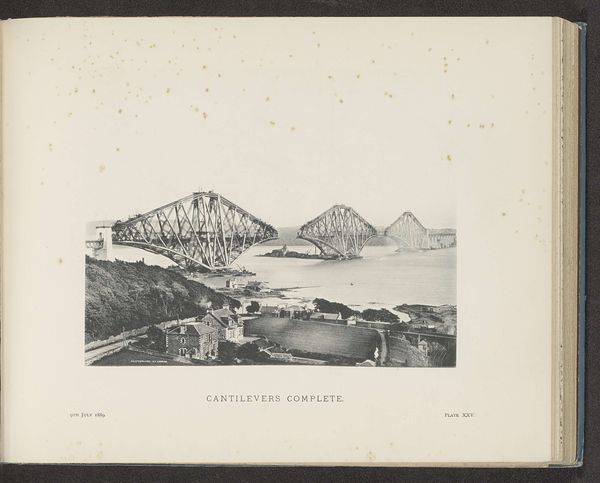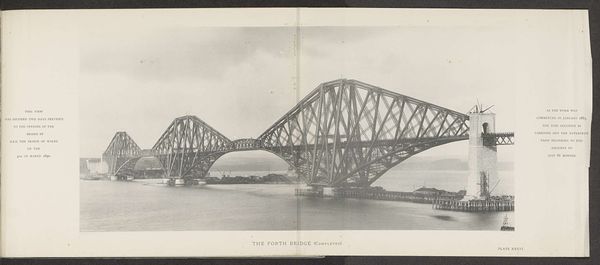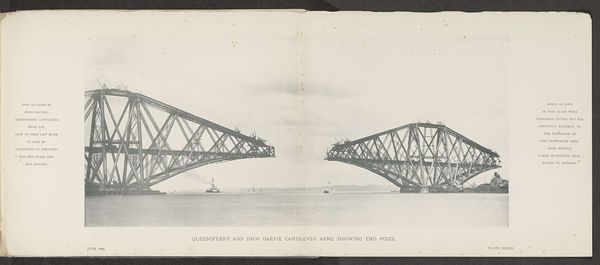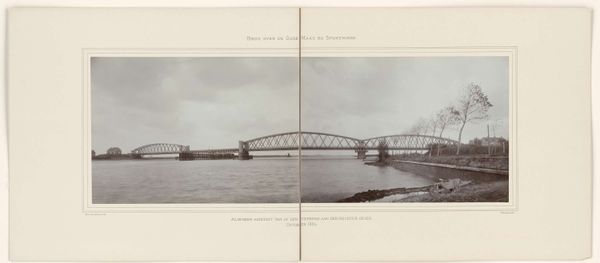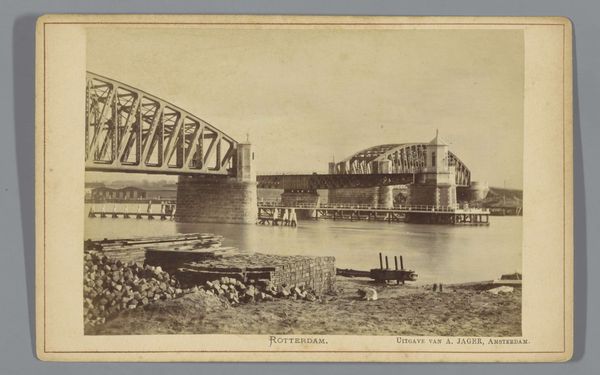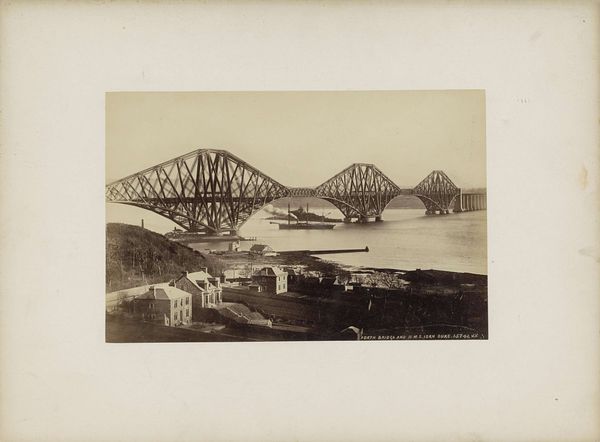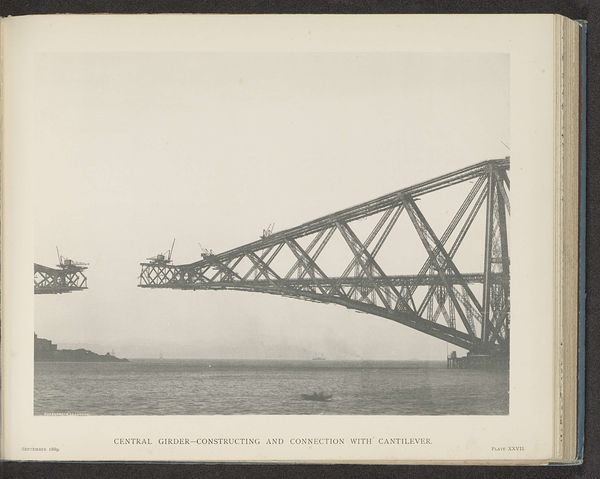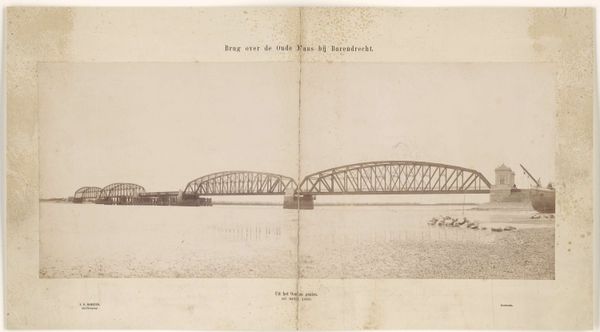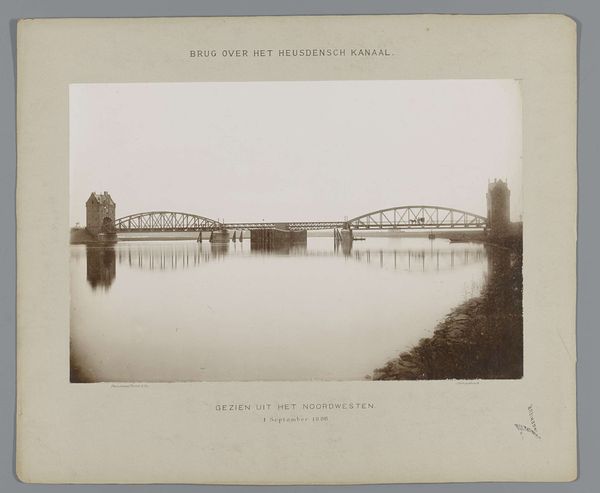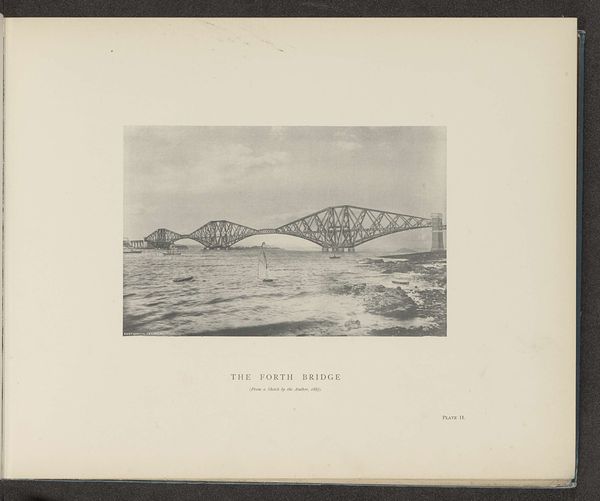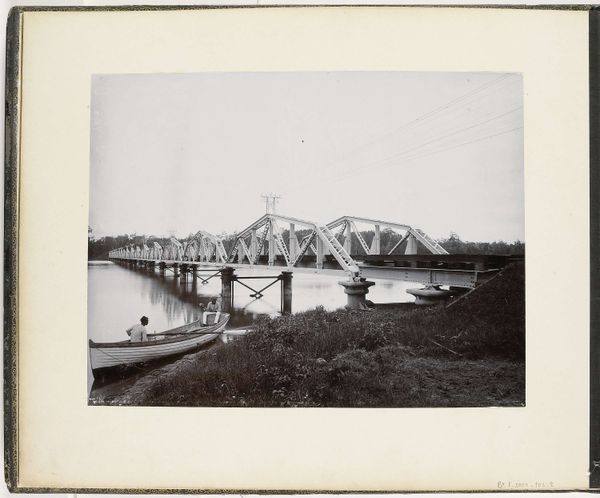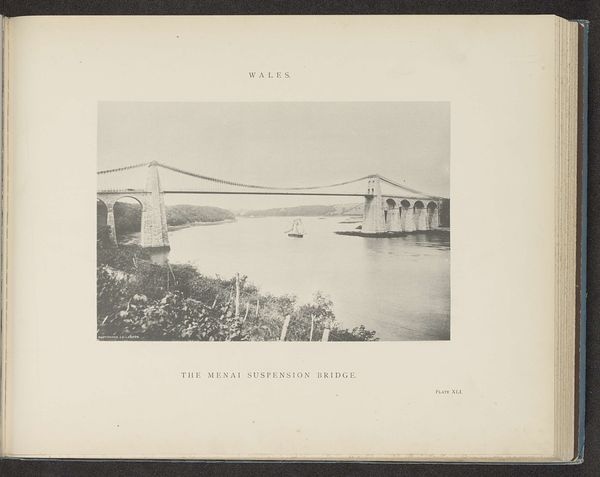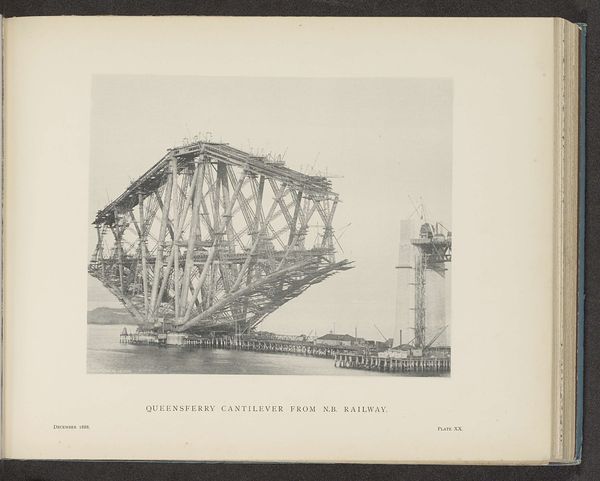
print, photography
#
pictorialism
# print
#
landscape
#
photography
#
cityscape
Dimensions: height 115 mm, width 179 mm
Copyright: Rijks Museum: Open Domain
Curator: Look at this captivating image titled "Gezicht op Forth Bridge bij Queensferry, Schotland", or "View of the Forth Bridge at Queensferry, Scotland", a print dating from before 1890. The artist remains anonymous, but what strikes you first? Editor: The bridge itself is incredible! The angular, latticed metalwork creates a spiderweb effect across the water. It projects a strong sense of industrial power but, paradoxically, feels fragile too. It almost seems to vibrate with potential energy. Curator: It's interesting you pick up on that duality. Constructed in the late 19th century, the Forth Bridge was a monumental achievement of Victorian engineering, but prints like this served to make these massive feats palatable and impressive to a wider public. The "Practical Photographer" reference suggests that it was shown to the readers in order to encourage the combination of technical advancement, social purpose and artistic style which were all merging at the time in photography. Editor: That makes sense, considering how prominently the bridge is presented. Bridges often serve as potent symbols, linking separate entities—ideas, people, even realities. Is this bridge carrying people between fixed points, or ushering in a new, industrialized future? Curator: Possibly both. This particular composition also reflects the style of pictorialism. Its emphasis on aesthetic effect over pure documentation—think of the softened focus and atmospheric perspective – sought to elevate photography to the status of fine art. Editor: So, beyond the utilitarian function, the artist uses it as a landscape element, maybe even a symbol for an age of technology. A very potent and pervasive message about technology entering into the culture. Curator: Exactly. In many ways, images such as these helped the public come to terms with—and celebrate—technological advances that were radically changing their world. It showed that social progress was underway. Editor: Looking at it now, it resonates differently, though. Knowing the social cost of progress, that latticework evokes both strength and vulnerability, doesn't it? Curator: Yes, time gives us different lenses. What once heralded progress now evokes complex questions about technology's legacy and its lasting impact. Editor: A structure frozen in time, reminding us that even the most seemingly stable symbols are constantly evolving in our minds.
Comments
No comments
Be the first to comment and join the conversation on the ultimate creative platform.
